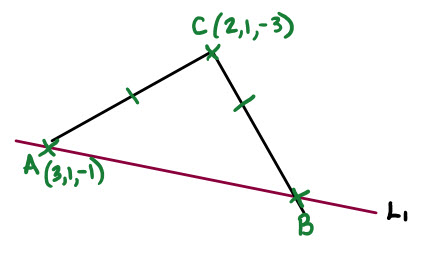 This page looks at the intersections of lines in 2 and 3 dimensions. In 2D, lines intersect or are parallel. In 3D, it is slightly more complicated, they can intersect or be parallel or be skew (not parallel and not intersect!). We will also look at applications of this with moving objects (Kinematics) in which boats and planes can cross paths and collide.
This page looks at the intersections of lines in 2 and 3 dimensions. In 2D, lines intersect or are parallel. In 3D, it is slightly more complicated, they can intersect or be parallel or be skew (not parallel and not intersect!). We will also look at applications of this with moving objects (Kinematics) in which boats and planes can cross paths and collide.
On this page, you should learn about
- coincident, parallel, intersecting and skew lines
- the point of intersection of two lines
The following videos will help you understand all the concepts from this page
In the following video, we are going to look at the intersection of two lines. We will consider the following example
Find the coordinates of the point of intersection of the following two lines
\(\textbf{r}_1=\left( \begin{matrix} 1 \\ 0 \\ 1 \end{matrix} \right) +\lambda \left( \begin{matrix} 2 \\ -3 \\ 1 \end{matrix} \right) \)
\(\textbf{r}_2=\left( \begin{matrix} 5 \\ 1 \\ 0 \end{matrix} \right) +\mu\left( \begin{matrix} 1 \\ 2 \\ -1 \end{matrix} \right) \)
Notes from the video
Print from here

A line L1 passes through the points P(-13,-6,1) and Q(3,2,-3).
A second line L2 has equation \(\textbf{r}=\left( \begin{matrix} 9\\12 \\ 2 \end{matrix} \right) +s\left( \begin{matrix} -3 \\ 2\\4 \end{matrix} \right) \)
- Show that \(\overrightarrow{PQ}=\left( \begin{matrix} 16 \\ 8\\-4 \end{matrix} \right) \)
- Hence, write down the equation L1 in the form \(\textbf{r}=\textbf{a}+t \textbf{b}\)
- The lines L1 and L2 intersect at the point R. Find the coordinates of R.
Hint
Full Solution
How much of Intersection of Lines have you understood?






 Twitter
Twitter  Facebook
Facebook  LinkedIn
LinkedIn